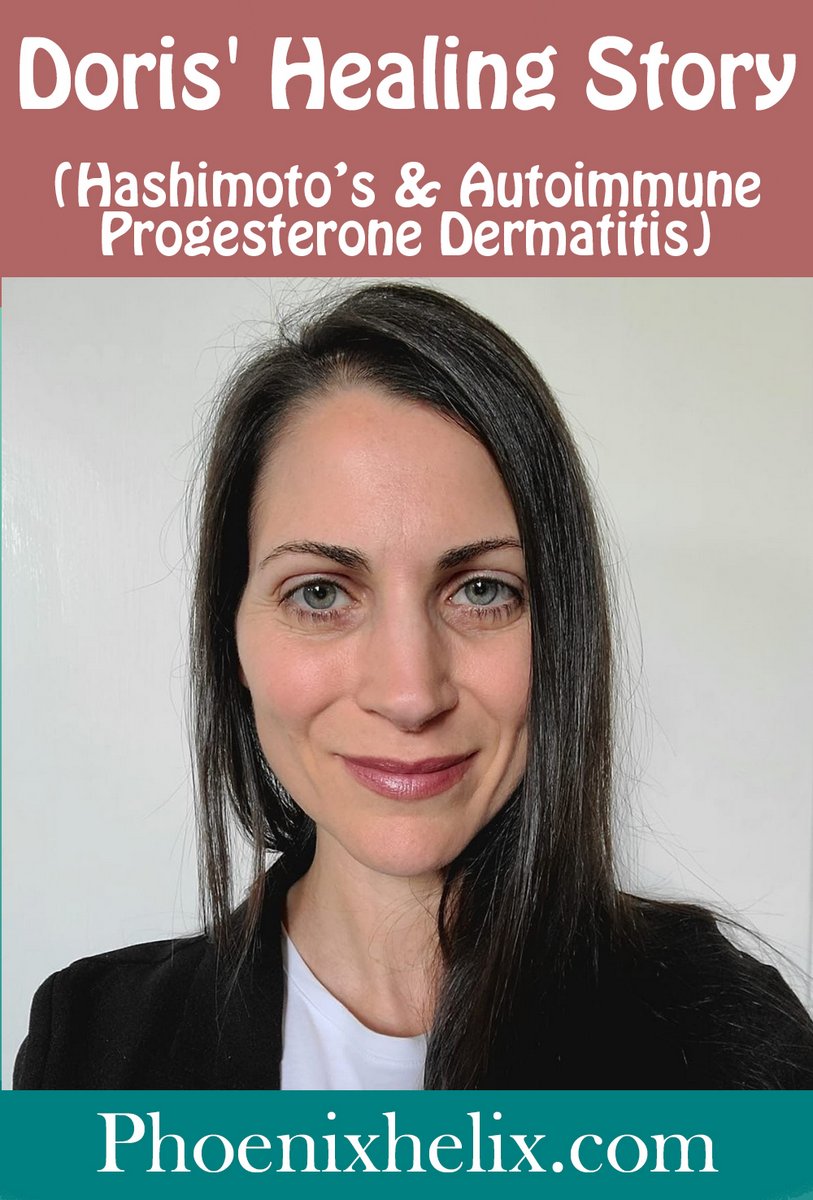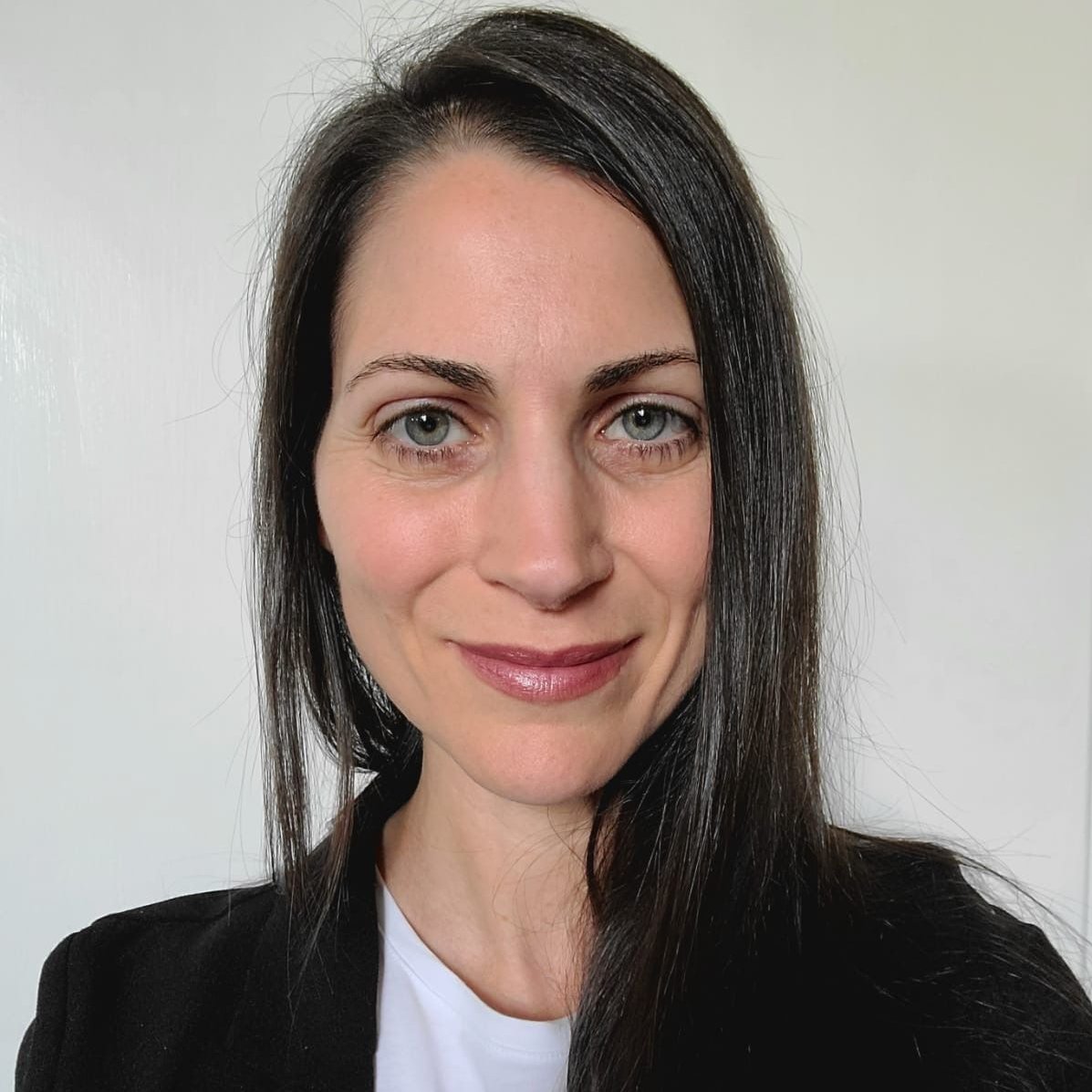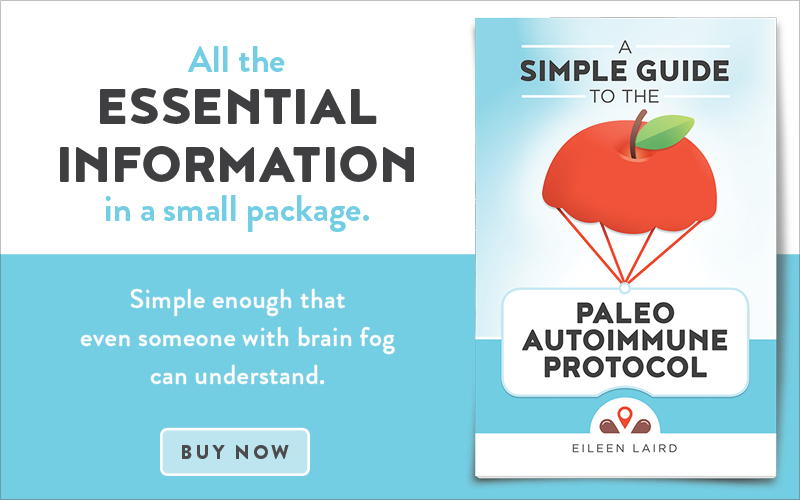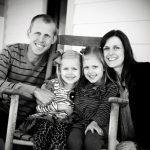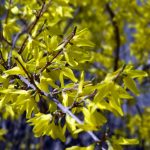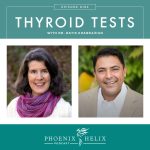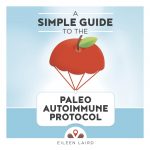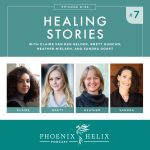“I believe absolutely that it is in sharing the most vulnerable aspects of our journeys that we support each other to find grace and strength and healing during equally challenging times.”
~ Baden Lashkov
Living a Resilient Autoimmune Life
Doris Romano found herself in the position many patients do – steadily worsening health with no clear cause. Her doctors couldn’t find anything wrong, and all her labs came back “normal”. That’s when she sought the help of a naturopath and discovered her autoimmune diagnoses. The Paleo Autoimmune Protocol (AIP) made a huge difference in her quality of life. It eliminated almost all of her symptoms and diminished the rest. She shares the details in this interview.
What were your first symptoms? When did you learn what it was?
I hadn’t felt “normal” for a long time and often returned to my medical doctor to help me figure out what was wrong. I eventually suspected that I had an issue with my thyroid based on my own research and years of increasingly worsening symptoms: constipation, anxiety, irritability, mood swings, body and joint aches, inability to lose weight, fatigue, waking up in the middle of the night ravenously hungry, cold hands and feet, brittle nails, hair loss, heavy periods, no libido, and chronic hives consistently connected to my menstrual cycle. I was also noticing a pattern in my yearly blood work: decreasing ferritin, vitamin B12, vitamin D and neutrophil count, and increasing fasting glucose. But my TSH and T4 levels came back “normal” so my doctor said I was fine. I was diagnosed with Hashimoto’s disease in May 2018 after finding a new naturopathic doctor that took my many years of symptoms seriously.
It was also my naturopath who suspected Autoimmune Progesterone Dermatitis based on the timing of my symptoms around my menstrual cycle. She referred me to my allergist, and he confirmed the diagnosis based on a positive allergy skin test with intradermal progesterone on my forearm.
Can you describe what it was like for you, when your condition was at its worst?
Every day, I woke up with extreme fatigue, joint pain and stiffness, and simply rolling out of bed would throw my back out. I was having panic attacks from the stress, and my body was always on edge.
On January 4, 2018, I woke up in the middle of the night with an odd tingling sensation on my bottom lip. I disregarded it but when I got out of bed in the morning, I had my first, and thankfully only, experience with angioedema. Up until then, I had grown accustomed to the hives and the red, itchy, eczematous skin rashes that would begin a few days before my menses, subside a day or two after menstruation began, and then recur the next month. But I had never experienced swelling like this. That was one one of the most challenging and scary symptoms I experienced.
What treatment methods did you try before dietary intervention – conventional or alternative?
The symptoms I was experiencing for all those years were numerous, nebulous and overlap with many other conditions. So, although Hashimoto’s is incredibly common, it’s not surprising that its seemingly disconnected symptoms are commonly brushed off as stress, depression, lack of sleep, and the all too common “It’s all in your head.” So, I actively addressed my health from all angles and sought a variety of health professionals to help: massage, chiropractic, talk therapy, reiki, personal training, meditation and acupuncture. I also started to reduce my exposure to toxins in my home, personal care products and water.
Which healing diet(s) did you choose?
Ironically, about a month before being diagnosed with Hashimoto’s, I heard about the Autoimmune Protocol (AIP) and its success in reversing autoimmune symptoms. As a firm believer in the healing power of food, I didn’t need any convincing to leap into the AIP cold-turkey, and it was a relatively smooth transition from the paleo way of eating I had been following for two years. After six months in the elimination phase, I was able to reintroduce many foods successfully, and I have been able to reverse or reduce the majority of my symptoms.
How fast did you see results?
I was AMAZED at how quickly it helped. Within a couple of weeks, my digestive symptoms radically improved, my mood started to stabilize, and I didn’t realize how much water I was retaining from the inflammation in my body. Eventually, I regained my energy and the joint pain and body aches dissipated. My period was no longer heavy and my PMS symptoms vanished. I never had another experience of angioedema, and although the hives outbreaks would continue to cyclically appear on my body, they became less intense over time.
What other areas of your health improved simultaneously?
My exercise tolerance and rate of recovery started to increase, which improved my mental health considerably. Weight lifting has been an important part of my self-care routine since I was a teen and gives me mental clarity, stress relief and confidence. Learning how to exercise with an autoimmune condition meant paying attention to intensity, volume, and recovery in a way that I always took for granted. I am happy to say that today, my body is in a place that invites a variety of movements including long slow movements like walking in nature, which not only improves my fitness but my overall well-being.
What symptoms still remain?
The chronic hives have not yet been completely resolved, but I’ve learned that skin-related autoimmune conditions are some of the most challenging to mitigate with diet alone. I continue to work with my functional medicine practitioner to complement my diet with a targeted supplement protocol, along with managing stress and prioritizing sleep for resolving inflammation. These strategies have also helped address the blood sugar dysregulation that I was experiencing when my condition was at its worst.
What other things do you do outside of diet to support your health and healing?
Very early on in my healing journey, I knew intuitively that recovery went beyond the food and over time, I have learned to meet my autoimmunity with tremendous curiosity instead of overwhelm. The power of movement, rest, connection (to people as well as nature) and self-love was never more clear to me. I make rest, sleep and walks in nature a priority so that my body feels calm and nourished. I focus heavily on mindset and manage my stress response by incorporating breathwork, journaling, and essential oils into my day. Additionally, I have learned to ask for the supportive presence of loved ones when I need it, and to say “yes” when help is offered.
What role has medication played in your journey?
I have not taken any medication during my autoimmune journey. My thyroid responded very well to diet and lifestyle changes, and my naturopath didn’t recommend medication. My allergist wanted to prescribe prednisone and antihistamines for the autoimmune progesterone dermatitis, but I chose to decline them due to the side effects. Instead, I use essential oils like tea tree, peppermint and lavender for itching and healing.
How strict were/are you on the dietary protocol? Any “cheats”?
I followed the AIP strictly during the elimination phase. I banned the word “cheat” from my lexicon a long time ago and instead gave myself permission to eat whatever I wanted. The desire to “cheat” fosters a scarcity mindset and makes me feel anxious and greedy. I countered that with gratitude. To me, food is abundant and a privilege. I kept my focus on all the food options that were available to nourish and heal me – and there are so many! Having an autoimmune condition already makes one feel restricted. I was interested in learning ways to adapt the AIP diet to my personal journey of recovery so that the process was joyous, simple and possible.
Do you intend to do this diet forever, or do you hope to wean yourself off it eventually?
My goal is to be able to keep my autoimmunity as close to remission as possible on something close to a paleo diet. My emphasis is on nutrient density and food quality, for as long as that works for me. I have successfully reintroduced into my diet all the foods that I want to eat, but I don’t plan to reintroduce anything that can cause a leaky gut or immune stimulation (like gluten or soy in my case). When I am undergoing a period of additional stress in my life, I often return to the elimination phase of the AIP to keep inflammation low with nutrient-dense bone broth, vegetables, fermented foods, and high-quality seafood and meat.
What were/are the challenges for you in sticking to the diet?
Prior to autoimmunity, I was a foodie known for frequenting all sorts of delicious food venues in Toronto and beyond, and writing about it all afterward. Following the AIP meant that eating out came to a screeching halt because it was virtually impossible to find AIP-compliant foods at restaurants and cafes. Thankfully, I discovered Natura Market, a Canadian online grocer that sells AIP-friendly snacks and ingredients. I actually helped them identify and set up the AIP section of their store. I’d also like to give a shoutout to two great bakeries in Toronto that have AIP offerings: Delish Kitch and Leo and Co.
Lastly, although I already knew my way around a kitchen, it took more effort than I expected to avoid common roadblocks like accidentally under-eating, being unprepared on-the-go, and losing inspiration in the kitchen because my go-to recipes weren’t AIP-friendly (yet!).
Who supports you in your healing journey?
Learning how to talk to my amazing husband and two step-sons about my autoimmunity was extremely beneficial, because the more they knew about my symptoms, the more they were able to support me and the less isolated I felt. They were even willing to go on the AIP diet with me! Chronic conditions like autoimmune disease can affect our lifestyle and abilities in ways others may not understand. I knew intuitively that a strong support network was going to be integral in achieving wellness and vitality, just like the nutrient-dense diet I had adopted. So, I took deliberate action to build that support network. I nurtured the important relationships in my life, addressed the unsupportive ones, and sought out new friendships with others who “got it.” Connections that started online progressed offline to awesome dinner parties, meaningful conversations and community meet-ups.
What advice would you give to people with autoimmune disease who are just starting to consider diet and lifestyle changes?
An autoimmune diagnosis is life-changing, and learning about your illness is the first step to living well with autoimmune disease. We get to choose who we want on our healthcare team, so partner with those that make you feel supported in the knowledge only you have about your body. The journey back to health is not typically a linear one. Your body’s needs and abilities will continue to ebb and flow with life, but over time, you will learn what it takes for you to feel productive, joyful and vibrant.
Connect with Doris on Instagram @dorisxromano. If you live in Toronto, you can meet her in person through the AIP Toronto Facebook Group, which she co-founded.
Other Healing Stories
This is part of a series of autoimmune success stories. Click here to see the full list. They are also a regular feature of my podcast: Phoenix Helix.

